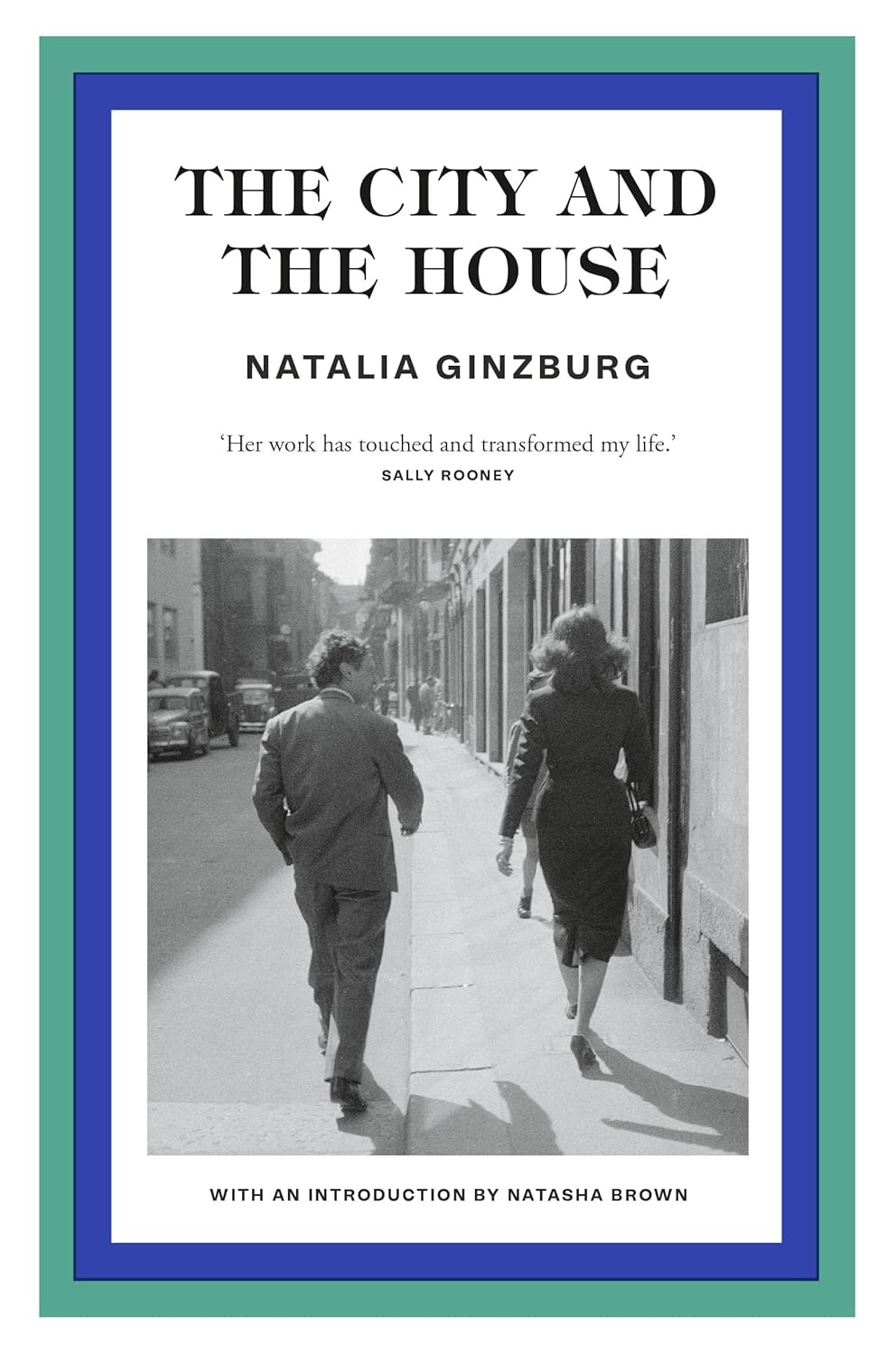Natalia Ginzburg: The City and the House review - a dying art | reviews, news & interviews
Natalia Ginzburg: The City and the House review - a dying art
Natalia Ginzburg: The City and the House review - a dying art
Dick Davis renders this analogue love-letter in polyphonic English

Many readers and writers think of epistolary novels as old-fashioned, just as letter writing itself can seem a bit quaint nowadays. The genre became popular during the 18th and 19th centuries following the success of Samuel Richardson’s Clarissa (1749) and of later Gothic novels like Mary Shelley’s Frankenstein (1818) and Bram Stoker’s Dracula (1897).
Unsurprisingly, however, it began to fizzle out after the invention of the telephone. In 1984, the Italian writer Natalia Ginzburg published her epistolary novel The City and the House (La città e la casa), and the action, such as it is, appears to be set during that same pre-internet era. Her characters lack the recourse to emails or text messages or social media, but are aware of the existence of landlines.
Yet the novel is polyphonic rather than telephonic, and several correspondents go out of their way to explain why they haven’t just picked up the phone and dialled the other’s number. “Don’t phone me and I won’t phone you,” Giuseppe writes to his former lover Lucrezia. “I don’t want to hear your voice, nor do I want you to hear mine. I prefer this sheet of paper.”
 As with Ginzburg’s masterpiece All Our Yesterdays (1952), a powerful novel set against the background of World War Two, The City and the House is an ensemble piece focusing on a family and group of friends, in this case as they react to Giuseppe’s emigration from Italy to the United States. “We all miss you very much and remember how you read Plato’s Dialogues to us,” writes Lucrezia, hinting perhaps that she (and Ginzburg) consider Socratic discourse to be an early example of polyphony in literature.
As with Ginzburg’s masterpiece All Our Yesterdays (1952), a powerful novel set against the background of World War Two, The City and the House is an ensemble piece focusing on a family and group of friends, in this case as they react to Giuseppe’s emigration from Italy to the United States. “We all miss you very much and remember how you read Plato’s Dialogues to us,” writes Lucrezia, hinting perhaps that she (and Ginzburg) consider Socratic discourse to be an early example of polyphony in literature.
There is no actual dialogue, in the sense of direct speech, in The City and the House. Instead, the letters consisting of short sentences written in everyday language translated into English by Dick Davis, resemble a Greek chorus or vernacular commentary on events taking place just offstage.
The city in question is Rome, the hub of Italian life and culture, and the house is Le Margherite, a lost paradise in the country where Lucrezia and her husband Piero used to hold weekend gatherings until her infidelities broke up the marriage.
Hook-ups and break-ups and other humdrum events keep the Italian postal service busy, but there is also occasionally a shocking bit of news, such as a murder or the death of a baby.
In fact, Ginzburg’s novel is actually a tale of two cities – and of several houses. Most of the letters are written to, from and about Giuseppe, the depressed middle-aged journalist who sells his apartment in Rome and moves to Princeton where his brother Ferruccio lectures in biology. When the brother dies, Giuseppe marries his widow Anne Marie, who also dies but not before Giuseppe has fallen in love with her daughter Chantal, a single mother, whose ex-husband Danny soon becomes his best friend in America.
Meanwhile, back in Rome, Giuseppe’s 25-year-old gay son, Alberico, starts renting a flat below Giuseppe’s best Italian friend, Egisto, who reports back (as does Giuseppe’s cousin Roberta) on the menage à trois once Alberico’s boyfriend Salvatore and an unattached but pregnant woman called Nadia move in.
As with earlier polyphonic epistolary novels like Clarissa or Dracula, the main plot engine in The City and the House is discrepancy of awareness – that is, a difference in awareness of what is going on, not only between one letter writer and another but also between the various correspondents and the reader for whom the printed text seems to exist diegetically within the lives of the characters. It’s the epistolary novel as conjuring trick, and Ginzburg handles it with aplomb.
- The City and the House by Natalia Ginzburg (Daunt Books, £10.99)
- More book reviews on theartsdesk
rating
Share this article
The future of Arts Journalism
You can stop theartsdesk.com closing!
We urgently need financing to survive. Our fundraising drive has thus far raised £49,000 but we need to reach £100,000 or we will be forced to close. Please contribute here: https://gofund.me/c3f6033d
And if you can forward this information to anyone who might assist, we’d be grateful.

Subscribe to theartsdesk.com
Thank you for continuing to read our work on theartsdesk.com. For unlimited access to every article in its entirety, including our archive of more than 15,000 pieces, we're asking for £5 per month or £40 per year. We feel it's a very good deal, and hope you do too.
To take a subscription now simply click here.
And if you're looking for that extra gift for a friend or family member, why not treat them to a theartsdesk.com gift subscription?
more Books
 'We are bowled over!' Thank you for your messages of love and support
Much-appreciated words of commendation from readers and the cultural community
'We are bowled over!' Thank you for your messages of love and support
Much-appreciated words of commendation from readers and the cultural community
 Frances Wilson: Electric Spark - The Enigma of Muriel Spark review - the matter of fact
Frances Wilson employs her full artistic power to keep pace with Spark’s fantastic and fugitive life
Frances Wilson: Electric Spark - The Enigma of Muriel Spark review - the matter of fact
Frances Wilson employs her full artistic power to keep pace with Spark’s fantastic and fugitive life
 Elizabeth Alker: Everything We Do is Music review - Prokofiev goes pop
A compelling journey into a surprising musical kinship
Elizabeth Alker: Everything We Do is Music review - Prokofiev goes pop
A compelling journey into a surprising musical kinship
 Natalia Ginzburg: The City and the House review - a dying art
Dick Davis renders this analogue love-letter in polyphonic English
Natalia Ginzburg: The City and the House review - a dying art
Dick Davis renders this analogue love-letter in polyphonic English
 Tom Raworth: Cancer review - truthfulness
A 'lost' book reconfirms Raworth’s legacy as one of the great lyric poets
Tom Raworth: Cancer review - truthfulness
A 'lost' book reconfirms Raworth’s legacy as one of the great lyric poets
 Ian Leslie: John and Paul - A Love Story in Songs review - help!
Ian Leslie loses himself in amateur psychology, and fatally misreads The Beatles
Ian Leslie: John and Paul - A Love Story in Songs review - help!
Ian Leslie loses himself in amateur psychology, and fatally misreads The Beatles
 Samuel Arbesman: The Magic of Code review - the spark ages
A wide-eyed take on our digital world can’t quite dispel the dangers
Samuel Arbesman: The Magic of Code review - the spark ages
A wide-eyed take on our digital world can’t quite dispel the dangers
 Zsuzsanna Gahse: Mountainish review - seeking refuge
Notes on danger and dialogue in the shadow of the Swiss Alps
Zsuzsanna Gahse: Mountainish review - seeking refuge
Notes on danger and dialogue in the shadow of the Swiss Alps
 Patrick McGilligan: Woody Allen - A Travesty of a Mockery of a Sham review - New York stories
Fair-minded Woody Allen biography covers all bases
Patrick McGilligan: Woody Allen - A Travesty of a Mockery of a Sham review - New York stories
Fair-minded Woody Allen biography covers all bases
 Howard Amos: Russia Starts Here review - East meets West, via the Pskov region
A journalist looks beyond borders in this searching account of the Russian mind
Howard Amos: Russia Starts Here review - East meets West, via the Pskov region
A journalist looks beyond borders in this searching account of the Russian mind
 Henry Gee: The Decline and Fall of the Human Empire - Why Our Species is on the Edge of Extinction review - survival instincts
A science writer looks to the stars for a way to dodge our impending doom
Henry Gee: The Decline and Fall of the Human Empire - Why Our Species is on the Edge of Extinction review - survival instincts
A science writer looks to the stars for a way to dodge our impending doom
 Jonathan Buckley: One Boat review - a shore thing
Buckley’s 13th novel is a powerful reflection on intimacy and grief
Jonathan Buckley: One Boat review - a shore thing
Buckley’s 13th novel is a powerful reflection on intimacy and grief

Add comment